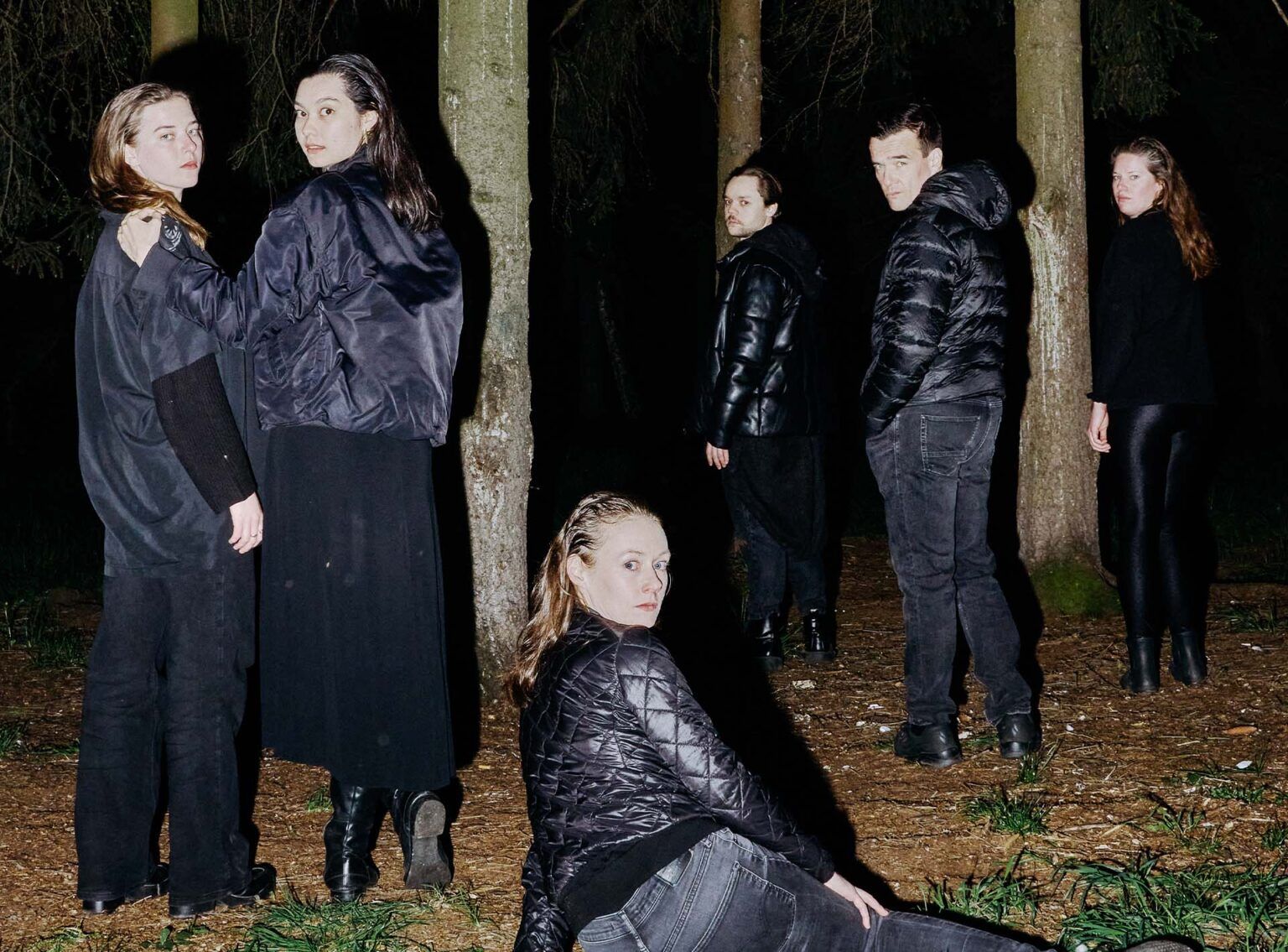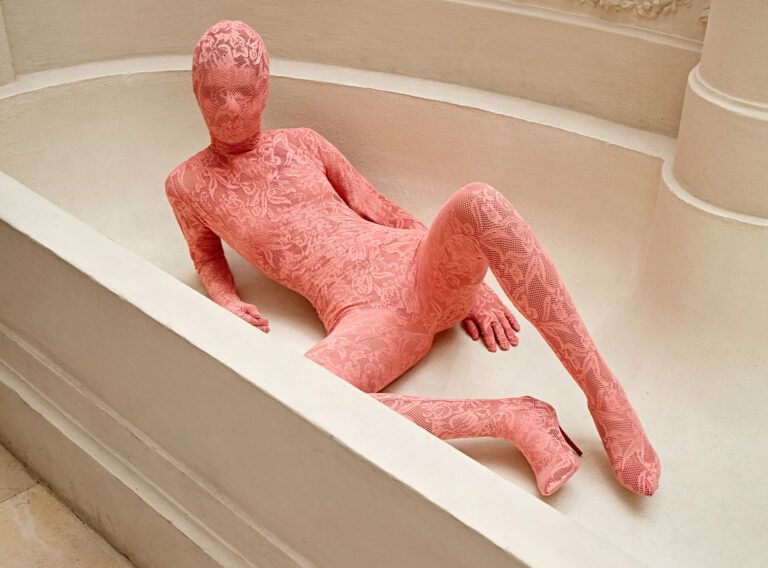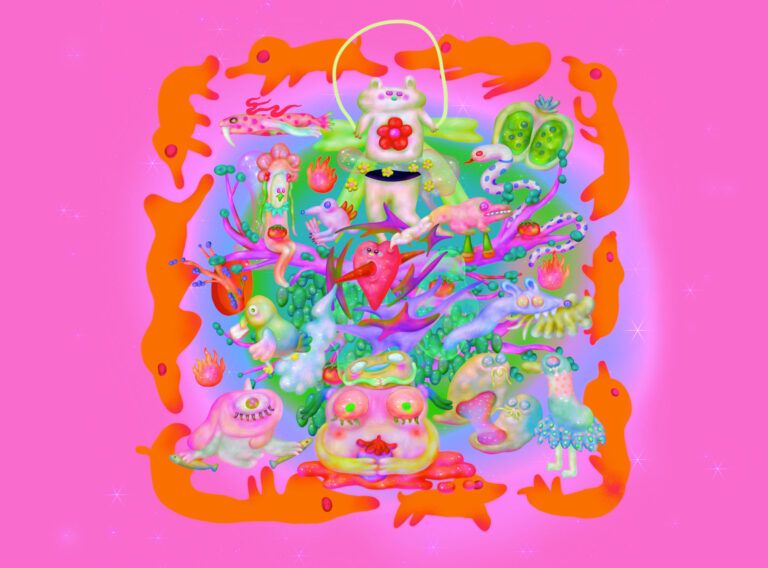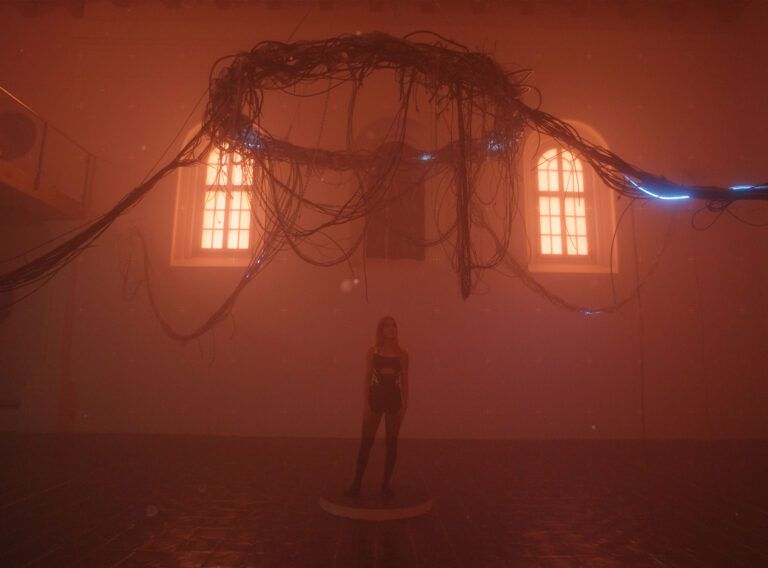Can you tell us more about the inspiration behind the creation of “Fatamorgana”? What led to the development of this unique concept?
The inspiration for the performance came from my interest in Romanticism as an artistic phenomenon, which I have been developing for some years now. The starting point of Fatamorgana is the (romantic) landscape and the concept of night which can be both pleasant and disturbing at the same time. In 2020, commissioned by the Body/Mind Festival, I created a work called Drama, which deconstructed one of the most important Romantic ballets, La Sylphide. It was a duet in which we explored what could be Romantic today: there was a lot of talking, piano playing, heartbreak song-singing, and dancing. The performance sparked my curiosity regarding the vast array of artistic themes associated with Romanticism, nostalgia and affect. Because, after all, I am nostalgic by nature and I dance mainly for the love of dance! The initial concept for Fatamorgana was worked out in collaboration with a NYC choreographer Rebecca Lazier during a residency organised by the Adam Mickiewicz Institute and later developed by myself during another residency at Hellerau in Dresden. When I told Madla Zelenková and Honza Horák from Studio Hrdinů about this idea, we came to the joint conclusion that it was worth developing in Prague. In addition to Romantic ballet, I began to be interested in the paintings from the period, which built a new relationship between the contemplative human figure and majestic nature. In Fatamorgana, I also develop my interest in signs and gestures in choreography: I use pantomime – gestures that have been perpetuated in the history of art and culture; both those that have been known for a long time, but also completely new ones.

The play starts with a group of six people meeting together and simultaneously uttering the phrase, “Luckily, we are going in the same direction.” How does this phrase set the tone and drive the play’s narrative?
I still don’t know if the performers will literally say this sentence on stage. For sure, the phrase is a kind of a shared base for all the dancers walking or looking in the same direction. The performance is very much about seeing: each other, the image, the landscape. The performers themselves often become part of the landscape on stage. We work a lot with directing the gaze of the audience: where the performer looks can direct the viewer’s gaze. In the end, a sentence „Luckily, we are going in the same direction” can be an indication that during the hour on stage the group is having some kind of transformative adventure, while the audience watches their journey.
The play description mentions the ever-changing landscape, resembling a multiplied figure from a romantic painting. How is this visual aspect portrayed on stage, and how does it contribute to the overall storytelling?
The monumental space of the Studio Hrdinů is very inspiring, resonating, as it were, with a romantic approach to nature, which by its vastness, inspires both awe and fear in people. I invited Valentýna Janů to work with us on the set design, who developed elements that at one time symbolise the big painting, and at another the natural landscape. These are objects that are at once abstract, as well as alluding to the history of theatre and art. For a big part of the performance, the dancers’ faces are invisible – they stare at the back wall, moving closer and further away from it, as if testing the principles of looking and being looked at at the same time. I’m interested in the politics of looking in multiple dimensions: what does it feel like to look in one direction together? How do you move knowing that you are being watched by a crowd? How do you simultaneously use your body as a moving object and how do you look inwards to see what movement does to the body?

“Fatamorgana” focuses on covering and uncovering the (Romantic) landscape. Can you elaborate on how this theme is explored throughout the play, both in terms of choreography and other production elements?
The Romantic landscape of the performance is based on the constant transformation of bodies and movement, which each time reminds us of something else. Sometimes the performers watch the changing space of the stage, at other times their joined bodies bring to mind extremely slow-moving geological formations. I’m interested in how a single gesture can constantly change meanings, how the images invoked are only important to the performers for a moment, as new ones appear over and over again. For example, in one scene, we imagine that we are in a dense forest at night, and the forest at night has the ability to produce things and phenomena in the human imagination that may not be there. In the context of the romantic landscape, the music composed by Agnė Matulevičiūtė is extremely important. The sound is slow, nostalgic, alluding to the things we love that have passed away. At the same time, the music acts as another performer – bringing to life ever new phonic spaces. Furthermore, the use of light, designed by Václav Hruška, is crucial to the performance, as it literally brings out this changing landscape. We use a number of blackouts, which each time reveal a slightly altered image that is sometimes still, other times the performers repeat sequences as if stuck in time. We sometimes also use very long ascents and descents of light, paralleling the cycle of nature.
Can you share any insights into the creative process behind the choreography? How did the choreographer (you) approach the development of movement and expression within the play?
The process of working on Fatamorgana is not too different from my previous working style. I come to the first rehearsal with a lot of ideas that I want to test. Sometimes it’s a sequence of steps, a set of exercises in looking at and describing the dance, formalising spontaneous gestures and movements. At the beginning we do a bit of reading, discussing in which direction it can all go. I have to admit that the six performers I work with – Lukáš Adam, Sára Arnstein, Jan Bárta, Adéla Gajdošová, Karolína Růžičková and Natálie Řehořová – are very generous, creative and willing to follow me through this dark romantic forest. About halfway through the process comes the most beautiful and at the same time the most difficult stage: the selection of material and the attempt at the composition of scenes and images. It is at this point that we test how different choreographies can work together, or how they can be contrasted. We have already produced so much material that it would be enough for a three-hour performance, and I would like to keep it under sixty minutes. I generally see the world in the show as cautious and slow, often looped with a few variations. Performers sometimes collaborate together, at other times they space out. Sometimes they see material things, other times they invoke those unseen but equally real. I guess what comes out is a poetic work that allows for multiple interpretations.
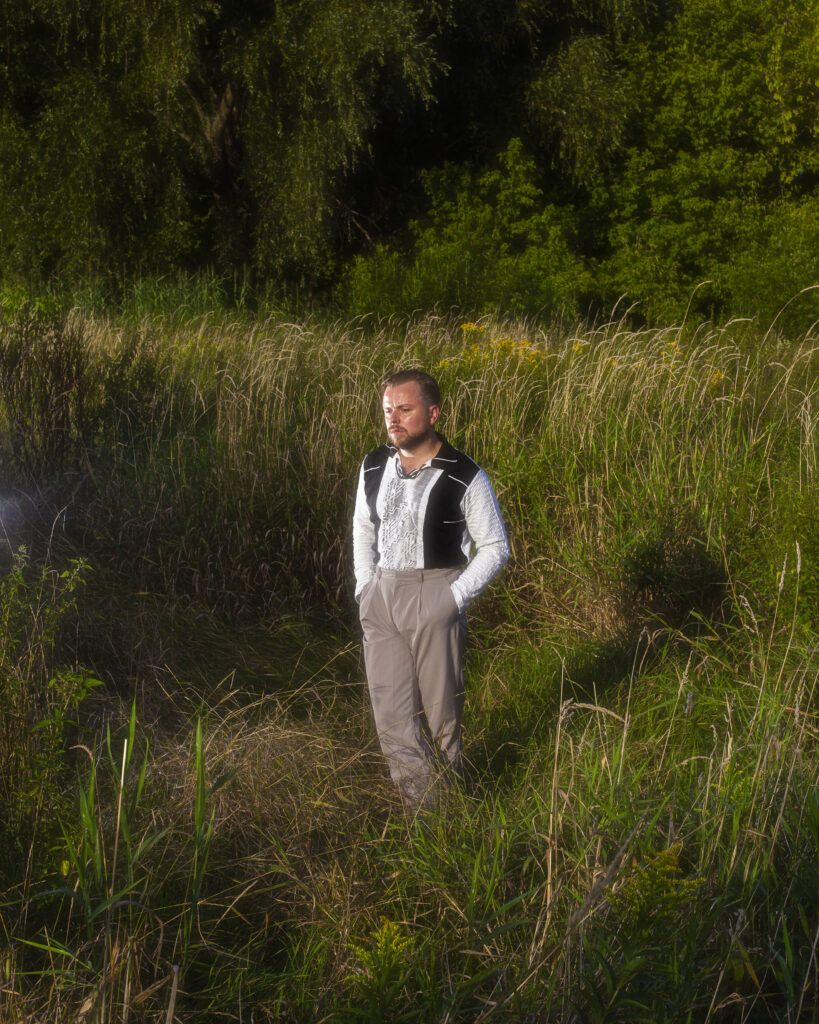
“Fatamorgana” seems to evoke a sense of otherworldliness and ambiguity. What emotions or experiences do you hope the audience will take away from watching this play?
What I value most about choreography is its right to seek a different logic of functioning on stage. I am interested in both precise, laboratory choreographic gestures, and sincere deep experience of the performer, and everything in between these extremes. I would be happy if the audience felt many things at once. On the one hand the pleasure of watching bodies moving in space, on the other the curiosity of what might happen. I really like it when the viewers of my works have the feeling that they have already seen this step or gesture somewhere, it reminds them of something, but it is hard for them to locate this something unambiguously in their memory. Just like „earworms” function in music, when we associate a song, it can’t get out of our heads, but we can’t recall the title or the artist. Furthermore, I like things that are constantly changing: just when it seems that they are almost becoming something clear to define, they look for a new form. It seems to me that, among other things, this is where the power of dance lies: thanks to its ambiguity, it does not impose anything and allows the viewer to see and feel more.
Finally, can you tell us about any upcoming performances or future plans for „Fatamorgana”?
The premiere of Fatamorgana will take place on 16 June, and it will be shown twice more on 17 and 19 June at Studio Hrdinů. It is a great coincidence that the Prague Quadriennal is taking place at that time – in the National Gallery, among other places – so we hope to have quite a number of people interested in visual arts in the audience. The next performances – after the holidays – will take place on 9 and 10 October. I am very pleased that Fatamorgana will be in the theatre’s permanent repertoire, so the show will be able to develop and be presented to audiences frequently. After the premiere, both I and Studio Hrdinů will be approaching our contacts so the performance can travel to other venues in the Czech Republic and be presented in Poland and Europe as well.
